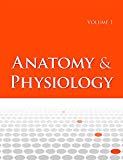Solutions for Anatomy and Physiology by OpenStax
Problem 1ILQ:
View this slideshow (http://openstaxcollege.org/l/stemcells) to learn more about stem cells. How do...Problem 2ILQ:
Watch this video (http://openstaxcollege.org/l/etissues) to find out more about the anatomy of...Problem 3ILQ:
Visit this link (http://openstaxcollege.org/l/10quiz) to test your connective tissue knowledge with...Problem 4ILQ:
Watch this video (http://openstaxcollege.org/l/musctissue) to learn more about muscle tissue. In...Problem 5ILQ:
Follow this link (http://openstaxcollege.org/l/nobel) to learn more about nervous tissue. What are...Problem 6ILQ:
Watch this video (http://openstaxcollege.org/l/healinghand) to see a hand heal. Over what period of...Problem 7ILQ:
Watch this video (http://openstaxcollege.org/l/tumor) to learn more about tumors. What is a tumor?Problem 9RQ:
The process by which a less specialized cell matures into a more specialized cell is called...Problem 10RQ:
Differentiated cells in a developing embryo derive from ________. endothelium, mesothelium, and...Problem 11RQ:
Which of the following lines the body cavities exposed to the external environment? mesothelium...Problem 12RQ:
In observing epithelial cells under a microscope, the cells are arranged in a single layer and look...Problem 13RQ:
Which of the following is the epithelial tissue that lines the interior of blood vessels? columnar...Problem 14RQ:
Which type of epithelial tissue specializes in moving particles across its surface and is found in...Problem 15RQ:
The ________ exocrine gland stores its secretion until the glandular cell ruptures, whereas the...Problem 16RQ:
Connective tissue is made of which three essential components? cells, ground substance, and...Problem 17RQ:
Under the microscope, a tissue specimen shows cells located in spaces scattered in a transparent...Problem 18RQ:
Which connective tissue specializes in storage of fat? tendon adipose tissue reticular tissue dense...Problem 19RQ:
Ligaments connect bones together and withstand a lot of stress. What type of connective tissue...Problem 20RQ:
In adults, new connective tissue cells originate from the ________. mesoderm mesenchyme ectoderm...Problem 22RQ:
Striations, cylindrical cells, and multiple nuclei are observed in ________. skeletal muscle only...Problem 23RQ:
The cells of muscles, myocytes, develop from ________. myoblasts endoderm fibrocytes chondrocytesProblem 24RQ:
Skeletal muscle is composed of very hard working cells. Which organelles do you expect to find in...Problem 25RQ:
The cells responsible for the transmission of the nerve impulse are ________. neurons...Problem 26RQ:
The nerve impulse travels down a(n) ________, away from the cell body. dendrite axon microglia...Problem 27RQ:
Which of the following central nervous system cells regulate ions, regulate the uptake and/or...Problem 28RQ:
Which of the following processes is not a cardinal sign of inflammation? redness heat fever swellingProblem 29RQ:
When a mast cell reacts to an irritation, which of the following chemicals does it release? collagen...Problem 30RQ:
Atrophy refers to ________. loss of elasticity loss of mass loss of rigidity loss of permeabilityProblem 31RQ:
Individuals can slow the rate of aging by modifying all of these lifestyle aspects except for...Problem 32CTQ:
Identify the four types of tissue in the body, and describe the major functions of each tissue.Problem 33CTQ:
The zygote is described as totipotent because it ultimately gives rise to all the cells in your body...Problem 34CTQ:
What is the function of synovial membranes?Problem 35CTQ:
The structure of a tissue usually is optimized for its function. Describe how the structure of...Problem 36CTQ:
One of the main functions of connective tissue is to integrate organs and organ systems in the body....Problem 37CTQ:
Why does an injury to cartilage, especially hyaline cartilage, heal much more slowly than a bone...Problem 38CTQ:
You are watching cells in a dish spontaneously contract. They are all contracting at different...Problem 39CTQ:
Why does skeletal muscle look striated?Problem 40CTQ:
Which morphological adaptations of neurons make them suitable for the transmission of nerve impulse?Problem 41CTQ:
What are the functions of astrocytes?Problem 42CTQ:
Why is it important to watch for increased redness, swelling and pain after a cut or abrasion has...Problem 43CTQ:
Aspirin is a non-steroidal anti-inflammatory drug (NSAID) that inhibits the formation of blood clots...Problem 44CTQ:
As an individual ages, a constellation of symptoms begins the decline to the point where an...Problem 45CTQ:
Discuss changes that occur in cells as a person ages.Browse All Chapters of This Textbook
Chapter 1 - An Introduction To The Human BodyChapter 2 - The Chemical Level Of OrganizationChapter 3 - The Cellular Level Of OrganizationChapter 4 - The Tissue Level Of OrganizationChapter 5 - The Integumentary SystemChapter 6 - Bone Tissue And The Skeletal SystemChapter 7 - Axial SkeletonChapter 8 - The Appendicular SkeletonChapter 9 - JointsChapter 10 - Muscle Tissue
Chapter 11 - The Muscular SystemChapter 12 - The Nervous System And Nervous TissueChapter 13 - Anatomy Of The Nervous SystemChapter 14 - The Somatic Nervous SystemChapter 15 - The Autonomic Nervous SystemChapter 16 - The Neurological ExamChapter 17 - The Endocrine SystemChapter 18 - The Cardiovascular System: BloodChapter 19 - The Cardiovascular System: The HeartChapter 20 - The Cardiovascular System: Blood Vessels And CirculationChapter 21 - The Lymphatic And Immune SystemChapter 22 - The Respiratory SystemChapter 23 - The Digestive SystemChapter 24 - Metabolism And NutritionChapter 25 - The Urinary SystemChapter 26 - Fluid, Electrolyte, And Acid-base BalanceChapter 27 - The Reproductive SystemChapter 28 - Development And Inheritance
Sample Solutions for this Textbook
We offer sample solutions for Anatomy and Physiology by OpenStax homework problems. See examples below:
Chapter 1, Problem 1ILQChapter 2, Problem 1ILQChapter 3, Problem 1ILQChapter 4, Problem 1ILQChapter 5, Problem 1ILQChapter 6, Problem 1RQChapter 7, Problem 1ILQChapter 8, Problem 1ILQChapter 9, Problem 1ILQ
Chapter 10, Problem 1ILQChapter 11, Problem 1RQChapter 12, Problem 1ILQChapter 13, Problem 1ILQChapter 14, Problem 1ILQChapter 15, Problem 1ILQChapter 16, Problem 1ILQChapter 17, Problem 1ILQChapter 18, Problem 1ILQChapter 19, Problem 1ILQChapter 20, Problem 1ILQChapter 21, Problem 1ILQChapter 22, Problem 1ILQChapter 23, Problem 1ILQChapter 24, Problem 1RQChapter 25, Problem 1RQChapter 26, Problem 1ILQChapter 27, Problem 1ILQChapter 28, Problem 1ILQ
More Editions of This Book
Corresponding editions of this textbook are also available below:
ANATOMY+PHYSIOLOGY
13th Edition
ISBN: 2810017675928
ANATOMY AND PHYSIOLOGY
17th Edition
ISBN: 9781630180928
Anatomy & Physiology
1st Edition
ISBN: 9781938168130
Anatomy & Physiology
17th Edition
ISBN: 9781947172043
Related Biology Textbooks with Solutions
Still sussing out bartleby
Check out a sample textbook solution.
